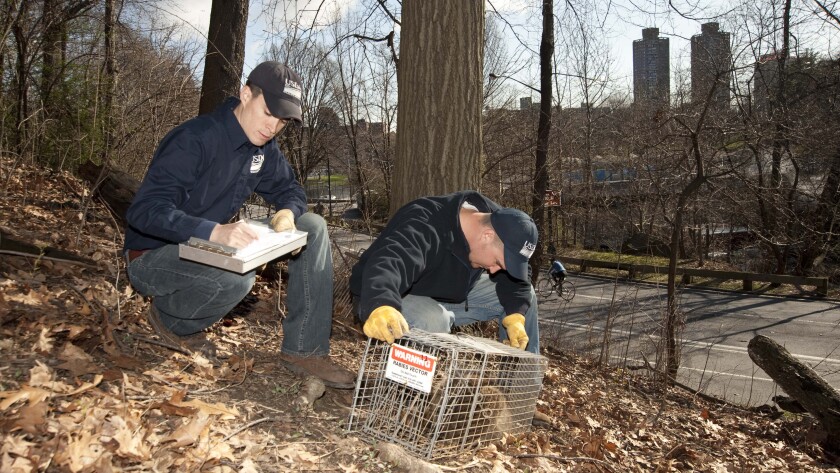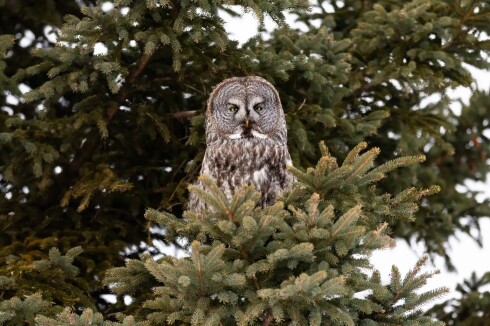Chad Alberg, district supervisor for USDA's Wildlife Services in Minnesota, said his education was in wildlife but his background was growing up on the farm.
Both worlds combine in his job now, overseeing a team of technicians and biologists who focus on managing wildlife damage to farm operations and the general public. USDA's Wildlife Services arm patrols and intervenes in wildlife-related problems such as disease threats, livestock predation, crop losses, property damage and more.
ADVERTISEMENT
"Farmers were some of the first conservationists," Alberg said from his office in St. Paul.
Growing up on a small dairy farm in central Minnesota, Alberg said he didn't know the division of the USDA existed until he got to college, or that there was a need for it.
"We had deer, but not in the numbers that exceeded that threshold," he said. "We liked pursuing them, and took our share of deer, and next year there was always enough again. But we rarely had wildlife related issues other than kind of those common farm pests like pigeons, English sparrows and European starlings."
Every state has its own USDA Wildlife Services team, with each operating in a unique way with state cooperators and to fit the territory. In Minnesota, Alberg said it's a lot of deer work in the southern half and a lot of wolf-livestock conflict management up north. He said USDA staff is "very collaborative" with the state's Department of Natural Resources Fish and Wildlife division, and the producers in the area.

"I'm probably a little biased, but I'd suggest there's nobody more experienced when it comes to wildlife damage, conflict management than we are in Minnesota," Alberg said. "We are the federal expertise, and our staff are trained, trained and trained again. We hire people that want to be in this profession, and it's a very, very small segment of wildlife management."
The type of service provided by USDA Wildlife Service depends on the level of concern, Alberg said.
"We don't deal with every critter everywhere," he said. "We don't advertise, and we don't solicit, and all these contacts come to us, typically by word of mouth."
ADVERTISEMENT
Once the USDA staff evaluates a concern, Alberg said they recommend alternatives if they exist. If there are none, Minnesota's USDA Wildlife Service steps in by giving the requester some options.
"We have a decision-making model that kind of runs like a pyramid, and at the very, very tip is the lethal control," he said. "It's typically our last option after we've exhausted other options that aren't working."
The tool list is long but Alberg said it's all legal by state and federal standards.
"It's not always the same rules that would apply to say someone taking game on a harvest authorization through the state," he said. "We'll do some removals at night with specialized equipment, so that's a good example of that."
One type of treatment used by USDA staff in the Western U.S., aerial removal, when animals are shot from helicopters, is not used in Minnesota or most of the Midwest, Alberg said.
"It's a Western tool because of the landscape," he said.
Birdy work
"Birds are the largest amount of our work," Alberg said.
ADVERTISEMENT
USDA Wildlife Service technicians recently went from doing a starling eradication at a 3,000-head dairy to decreasing a 15,000 crow population at the Mayo Clinic in downtown Rochester, where after more than a decade of crow mitigation efforts, it was finally time to introduce fatal shots with air rifles.

Avicides, which are pesticides designed to kill or repel pest birds, are often used in situations like at the large dairy. Alberg said bird treatments are also common at feedlots and some mink farms.
"As far as starling treatments, dairies seem to be the primary affected farm," Alberg said. "There's only so many large dairies, but they're feeding large quantities of feed with high-protein ingredients in that mix, and that's what those birds know exist in the winter."
Dealing with birds on farms is easier than in urban settings like a heavily trafficked pedestrian area like downtown Rochester at the most famous hospital in the world.
"It's a little bit hairier to do than at a dairy in the winter," Alberg said.
Recently digging into old wildlife management records, Alberg wanted to know why crow roosts are now more found in urban settings after largely being a rural occurrence.
"In historical records, all the evidence points to rural crow roosts, out in the middle of nowhere in largely conifers," he said. "I wanted to figure out what started this phenomenon, and well, crows were very persecuted in the rural landscape."
ADVERTISEMENT
Measures sounding like warfare were taken to eradicate crows in rural America, he said, including using explosives in tree roots.
"They killed crows by the thousands," Alberg said. "So there's some outlying theory that perhaps we moved the crows to the city. The opposing theory is crows are smart. They know the city doesn't have predators."
Alberg is a professional when it comes to his job but he respects the wildlife he often has to manipulate the habitat of. Especially crows.
"I said to a guy that I like talking philosophically with, that when there's no people left on this planet, I bet there's still a crow," he said. "They just seem that tenacious and just tough enough and smart enough to maybe be that bird that's there."












